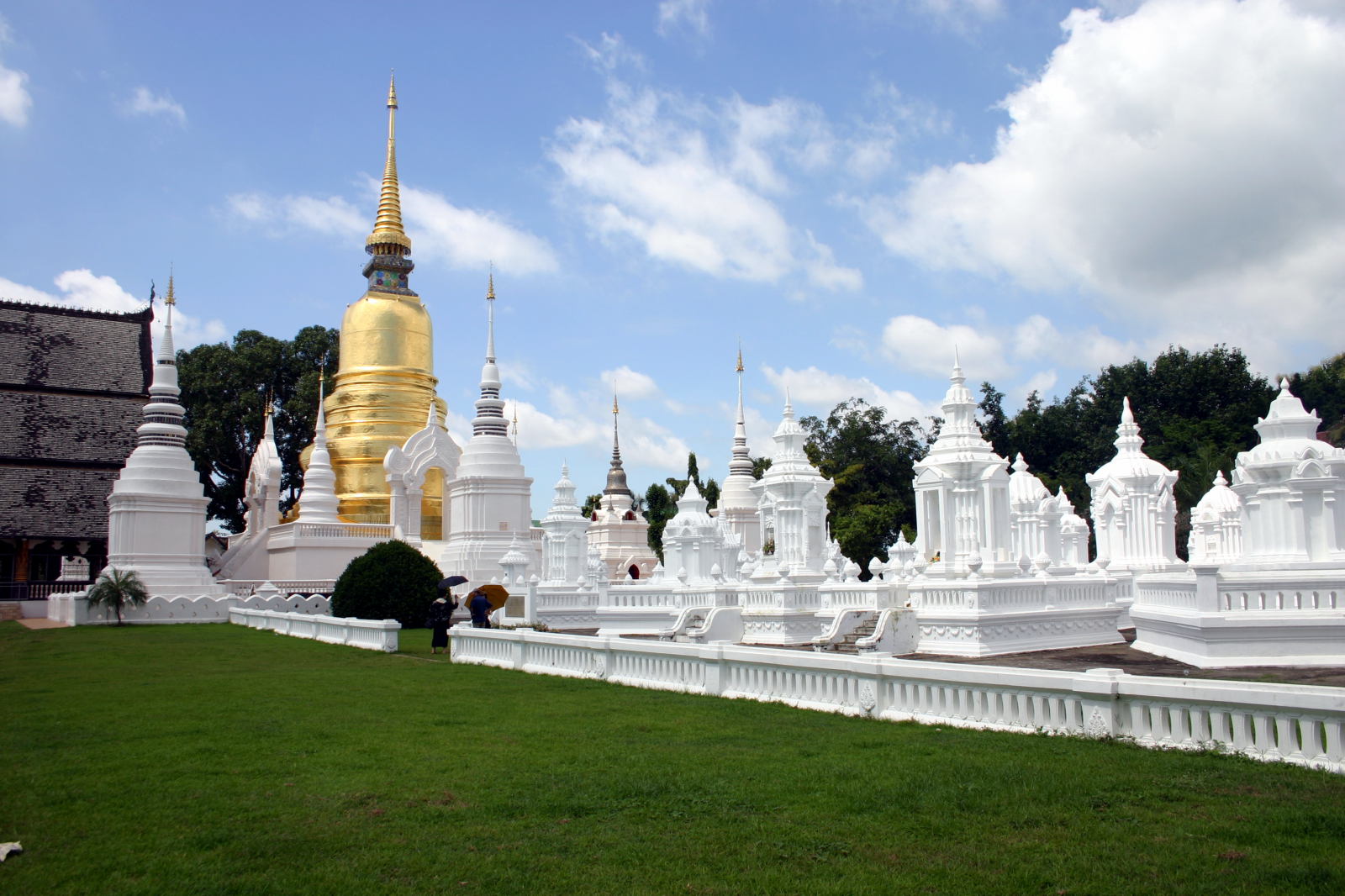Chiang Mai

As was the case with many popular destinations today, there was a time, not all that long ago, that Chiang Mai was a very 'un-POSH' destination. The only hotels in the town were built big to handle tourists who arrived by the bus-load. Things began to change in the 1990s with the construction of the first destination resort just outside the city. Alongside this development was a parallel trend towards reviving and updating traditional arts and crafts. The result was the development of the modern 'Thai style' that became highly regarded around the world. Today, there are numerous shops and boutiques scattered around the city offering the very best of Thai design. This POSH Guide to Chiang Mai provides an overview of what the city has to offer.
Chiang Mai, which in fact means "New City," celebrated its 700th anniversary just a few years ago, in 1996. The city was founded as the capital of the kingdom of Lanna ("A Million Rice Fields") in 1296. Under King Mengrai, the founder of Chiang Mai, Lanna unified several small kingdoms in the north, at about the same time that Sukhothai was established further south. King Mengrai founded many of the temples within the old city that are still important today.
The dynasty founded by King Mengrai lasted more than 250 years, until the Burmese captured the city in 1556. Burma held on to Chiang Mai for nearly 200 years, and to this day you can still see signs in Burmese as well as many other indications of Burmese influence. Towards the end of the 18th century, King Taksin, who regrouped the Thais in the south after the sacking of Ayutthaya, finally forced the Burmese out with the help of King Kawila of Lampang.
Chiang Mai was governed by a succession of princes who ruled the north under the protection of the Siamese king based in Bangkok. Late in the 19th century, Rama V appointed a high commissioner in Chiang Mai, but it wasn't until 1939 that Chiang Mai finally came under the direct control of the central government in Bangkok, at about the same time that the country was renamed Thailand.
Orientation
The original town built by King Mengrai lies within a two kilometer square moat. Within the moat was a massive city wall, of which you can still see portions at the corners as well as the reconstructed Tapae Gate. Within the walled city are quiet narrow lanes and some of the city's oldest temples, such as Wat Chieng Man, Wat Phra Singh and Wat Chedi Luang.
Although it lies on a relatively flat plain, the city nestles up to a mountain range to the west. To the east of the old city, the Ping River flows south towards Bangkok. Most of the city's hotels lie between the walls of the old town and the river.
Chiang Mai Sights
There are at least two "must see" sights the visitor to Chiang Mai must tour. The first involves a trip up the winding road to the temple on top of Doi Suthep. The temple is a sight in itself, and its perch on top of a mountain provides a panoramic, if often cloudy, view of Chiang Mai and its environs. For the adventurous, the trip further up the mountains to the hill tribe village at Doi Pui is worth the rather bumpy ride.
The second main sight is the city's famous night bazaar. From about 7:00 pm on to midnight, Chang Klan road between Tapae and Loh Kroh roads is lined with stalls selling a mix of handicrafts and general goods such as clothing, luggage and jewelry. The night bazaar "proper" is housed in a building about midway along the road. Its mostly more of the same, but you'll find some interesting photography shops here where you can have your picture taken in traditional costume. Its definitely an experience!
Other attractions in Chiang Mai include the Mae Rim valley, which has elephant camps, orchid farms and butterfly ranches. A visit to Chiang Mai also typically includes a trip up Borsang road to visit factories where you can see, and of course purchase, silver, lacquer, bronze, leather goods, silk, umbrellas, etc. etc.
Temples
Chiang Mai is rightly famous for its many ancient temples, some of which date from the late 13th century. Its arguably the best place to spend some time examining these places of worship. While the temple on Doi Suthep can be extremely crowded, most of the other temples in and around the city can be relatively deserted.
Maps and Guides
Chiang Mai is not as well covered with specific guidebooks as Bangkok. It's worth noting that most hotels and many restaurants have free maps and tourist booklets freely available. There's no real need to purchase a map, although both the Nancy Chandler and Luxe maps have content you won't find elsewhere.
In this section
Chiang Mai Hotels
List of hotels in Chiang Mai recommended by the POSH Guide. Continue reading
Getting Around Chiang Mai
Tips for getting around Chiang Mai. Continue reading
Getting to Chiang Mai
Tips for getting to Chiang Mai. Continue reading